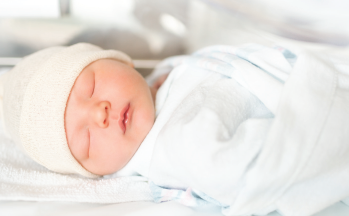Drug-Induced Sleep Endoscopy

© KieferPix / SHUTTERSTOCK.COM
Dana Thompson, MD, division head of otolaryngology at Ann and Robert H. Lurie Children’s Hospital of Chicago and professor of otolaryngology at Northwestern University’s Feinberg School of Medicine, said drug-induced sleep endoscopy (DISE) can complement or replace sleep studies in infants, which can be a particular help when infant sleep-study access is limited.
Explore This Issue
March 2020“Of all the board-certified sleep medicine physicians, only 5% really have any experience in children,” she said. Of all the accredited sleep centers in the U.S., she said, only a third of them study children under age 13.
In DISE, the goal is to create a level of anesthesia that mimics sleep.
“The advantage is it allows a dynamic examination in identifying exact sites so that you can do a targeted and tailored surgery,” she said.
A 2017 review found that most clinicians agree that DISE is appropriate for children with persistent OSA after tonsillectomy and adenoidectomy for helping to guide surgical intervention (Laryngoscope Investig Otolaryngol. 2017;2:423-431). The literature shows that DISE is particularly good at identifying obstruction that happens at multiple levels of the airway (Eur Arch Otorhinolaryngol. 2017;274:2319-2325). Studies of pediatric scoring systems have found that DISE scores correlate well with apnea-hypopnea index scores.
A Four-Month-Old with Troubling Sleep
The panelists discussed the case of a four-month-old with nightly pauses in breathing, an oxygen desaturation index of 3.5 events an hour, and oxygen saturations of less than 90% for 2.1% of the child’s total sleeping time.
Dr. Johnson said that, based on pictures of the child, he wouldn’t worry about a failure to thrive.
“That would be a big determinant for me on how aggressive I’m going to be: Is there good weight gain or is there poor weight gain? Also, what does the physical exam show?” he said.
Dr. Johnson said he would almost always do a flexible endoscopy to see how congested the nose is, whether there is adenoid hypertrophy or nasal obstruction, and how the upper airway looks. If the exam was normal, he would likely order a sleep study. If it was, say, obvious laryngomalacia, he would talk to the family and consider observing for a short time or moving right to surgery.
Dr. Thompson said that in these cases she often asks the family to bring in smartphone video of their children sleeping so they can describe what concerns them. In this case, she said, “I’m not sure I would get a sleep study” unless there were comorbidities such as prematurity, genetic and syndromic conditions, or concerns for neurologic disease. Depending on those other considerations, she would probably do an awake nasopharyngoscopy and laryngoscopy and then DISE.
Dr. Ishman said she likely would have enough data to avoid a sleep study.
“This is an abnormal oximetry study,” she said. “So I actually don’t think you need a sleep study; however, you might want one after whatever intervention (you choose), if you do one.”
Dr. Ishman said she has stopped using the flexible scope in the office very much because she knows she’ll do a DISE anyway.
“Unless I’m looking for laryngomalacia or vocal fold motion, I tend to go straight to the DISE,” she said.
Dr. Thompson said the flexible endoscope exam can buttress the findings in a meaningful way. She said sometimes she sees that the vocal cords are not opening correctly while a patient is awake—and if she also sees this when the patient is asleep, it reinforces for her that it is a real issue.